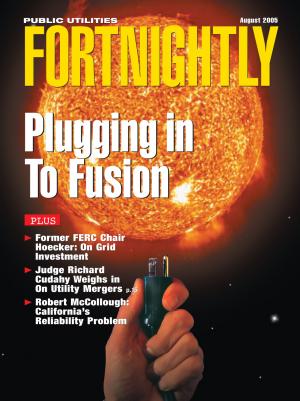Infrastructure isn't keeping pace. So how to "help" the market without killing it?
Richard Stavros is Fortnightly's Executive Editor.
It's a problem that is taxing the industry's brightest minds: What's the right price signal to bring forth enough infrastructure to maintain reliability over the long haul?

Moreover, if such a model exists, can it work without stifling competitive markets? In June, experts journeyed to opposite coasts to meet with regional grid operators, regulators, and staff from California, the Mid-Atlantic, and the Federal Energy Regulatory Commission (FERC) in a continuing search for answers. (See FERC Docket Nos. AD05-11 and PL05-7.)
And in this month's issue, former FERC Chairman James Hoecker and Robert McCullough address (a) the dearth of transmission investment across the country, and (b) reliability problems in California, respectively.
In the Northeast, the urgency for some sort of model to encourage investment in electric capacity accompanies an alarming rash of announcements of new power-plant retirements in the PJM region-linked in part to the pending merger between Exelon and PSEG. Such announcements leave grid operators with few options, particularly in specific localities where chronic grid constraints make supplies tight. While parts of PJM can boast of reserve margins of 20 to 30 percent, experts predict that power supplies could someday fall short without the right regulatory model to guarantee capacity adequacy.

